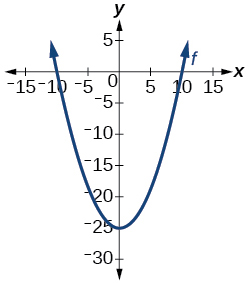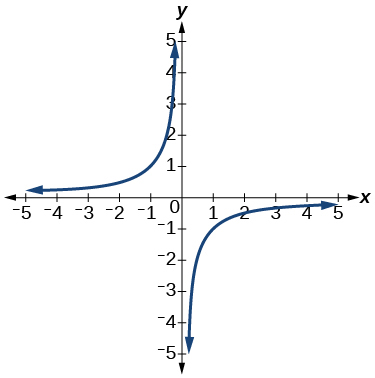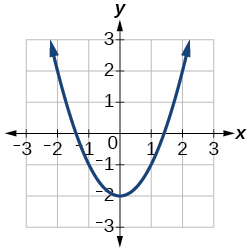3.1E: Funciones y Notación de Funciones (Ejercicios)
- Page ID
- 112082
Para los siguientes ejercicios, determinar si la relación es una función.
1. \(\{(a, b),(c, d),(e, d)\}\)
2.\ {(5,2), (6,1), (6,2), (4,8)\}\)
3. \(y^{2}+4=x,\)para\(x\) la variable independiente y\(y\) la variable dependiente
4. ¿La gráfica de la Figura 1 es una función?

Para los siguientes ejercicios, evalúe la función a los valores indicados:
\[\begin{array}{lllll} f(-3) ; & f(2) ; & f(-a) ; & -f(a) ; & f(a+h) .\end{array} \nonumber\]
5. \(f(x)=-2 x^{2}+3 x\)
6. \(f(x)=2|3 x-1|\)
Para los siguientes ejercicios, determine si las funciones son uno-a-uno.
7. \(f(x)=-3 x+5\)
8. \(f(x)=\mid x-3\)
Para los siguientes ejercicios, utilice la prueba de línea vertical para determinar si la relación cuya gráfica se proporciona es una función.
9.

10.

11.

Para los siguientes ejercicios, grafica las funciones.
12. \(f(x)=\mid x+1\)
13. \(f(x)=x^{2}-2\)
Para los siguientes ejercicios, utilice la Figura 2 para aproximar los valores.

14. \(f(2)\)
15. \(f(-2)\)
16. Si\(f(x)=-2,\) entonces resolver para\(x\).
17. Si\(f(x)=1,\) entonces resolver para\(x\).
Para los siguientes ejercicios, usa la función\(h(t)=-16 t^{2}+80 t\) para encontrar los valores en la forma más simple.
18. \(\frac{h(2)-h(1)}{2-1}\)
19. \(\frac{h(a)-h(1)}{a-1}\)


